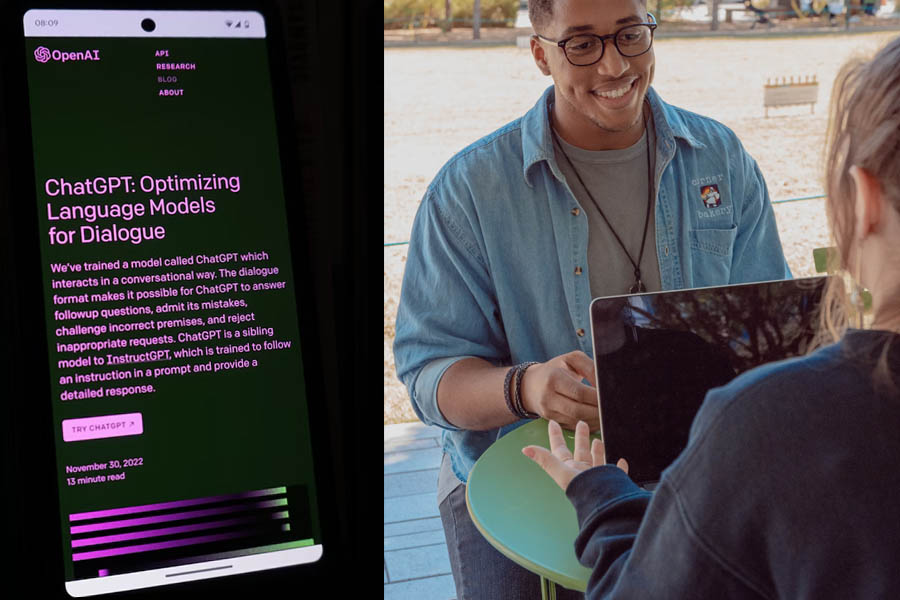
OpenAI's popular chatbot is taking a giant leap forward in human-like interaction. The company recently unveiled a groundbreaking update to its iOS and Android apps, enabling ChatGPT to speak out loud in five distinct voices. Over the past few days, I've immersed myself in conversations with ChatGPT and explored another exciting feature that allows the bot to respond to images.
Natural Conversations:
According to Joanne Jang, a product lead at OpenAI, this update goes beyond simply making conversations less tedious; it introduces the ability for two-way conversations. It's a game-changer in the world of AI-powered assistants.
Image Interaction:
But that's not all. OpenAI has also introduced a photo-comprehension tool that makes ChatGPT more interactive. You can snap a photo and ask ChatGPT questions about it. While it may not excel at Tic-Tac-Toe, this feature adds a new dimension to your interactions with the bot. These image and voice features will be available to ChatGPT Plus subscribers for $20 per month in the coming weeks.
Giving ChatGPT a Mouth and Eyes:
In essence, OpenAI has given its chatbot a mouth and eyes. I've put both features to the test in various scenarios, from casual chats to plumbing advice to playing games. It's all very impressive, and at times, a little eerie.
Human-like Voices:
What sets this update apart is the lifelike quality of the voices. Unlike traditional text-to-speech systems, ChatGPT offers five available voices, each sounding remarkably human. These voices were generated from just a few seconds of sample speech provided by professional voice actors, then refined using OpenAI's cutting-edge computer models.
Collaboration and Synthetic Voices:
OpenAI is also collaborating with other organizations, including Spotify, on tools to translate podcasters' voices into other languages. While this technology holds incredible promise, it's currently available only to business partners due to the potential risks associated with voice cloning.
No Wake Word Needed:
Unlike voice assistants, ChatGPT doesn't require a wake word to activate. Simply enable "Voice conversations" in the app's settings menu, tap the headphone icon, and ChatGPT is ready to listen. A comic-book-style thought bubble indicates that it's awaiting your prompt, with an option to interrupt lengthy responses.
A Real Conversation:
I found myself captivated by ChatGPT's natural voice, advanced answers, and its ability to understand context. When I asked it to be my best friend and chat with me, we engaged in a five-minute conversation about my day at work, video production, and our favorite snacks. Similarly, when I asked it to explain Gabbar as if i were vilian of Sholey Hindi Movie, it delivered a comprehensive response. However, it's important to note that despite these impressive capabilities, you're still conversing with a machine.
Some Speed Bumps:
As with any emerging technology, there are some minor speed bumps. Response times can be slow, and connections may occasionally fail, though OpenAI assures that these issues are specific to an early test version. It's possible that consumers won't experience these hiccups.
Seeing the World:
The introduction of the photo feature adds a new dimension to ChatGPT's capabilities. Instead of describing something in words, you can now upload or snap a photo, circle the area of interest, and ask a question. The AI's responses were remarkably accurate, providing guidance on everything from fixing a leaking hose to cooking ideas based on available ingredients.
Context and Depth:
However, it's crucial to remember that even as AI systems like ChatGPT become more conversational and interactive, they may lack context and depth in certain areas, occasionally providing incorrect or incomplete information. OpenAI's latest update to ChatGPT brings us one step closer to seamless human-AI interactions. With its lifelike voices, image comprehension, and natural conversations, it's an exciting glimpse into the future of AI-assisted communication. Nevertheless, users should exercise caution and critical thinking, as AI, despite its advancements, remains a tool that relies on data and algorithms.